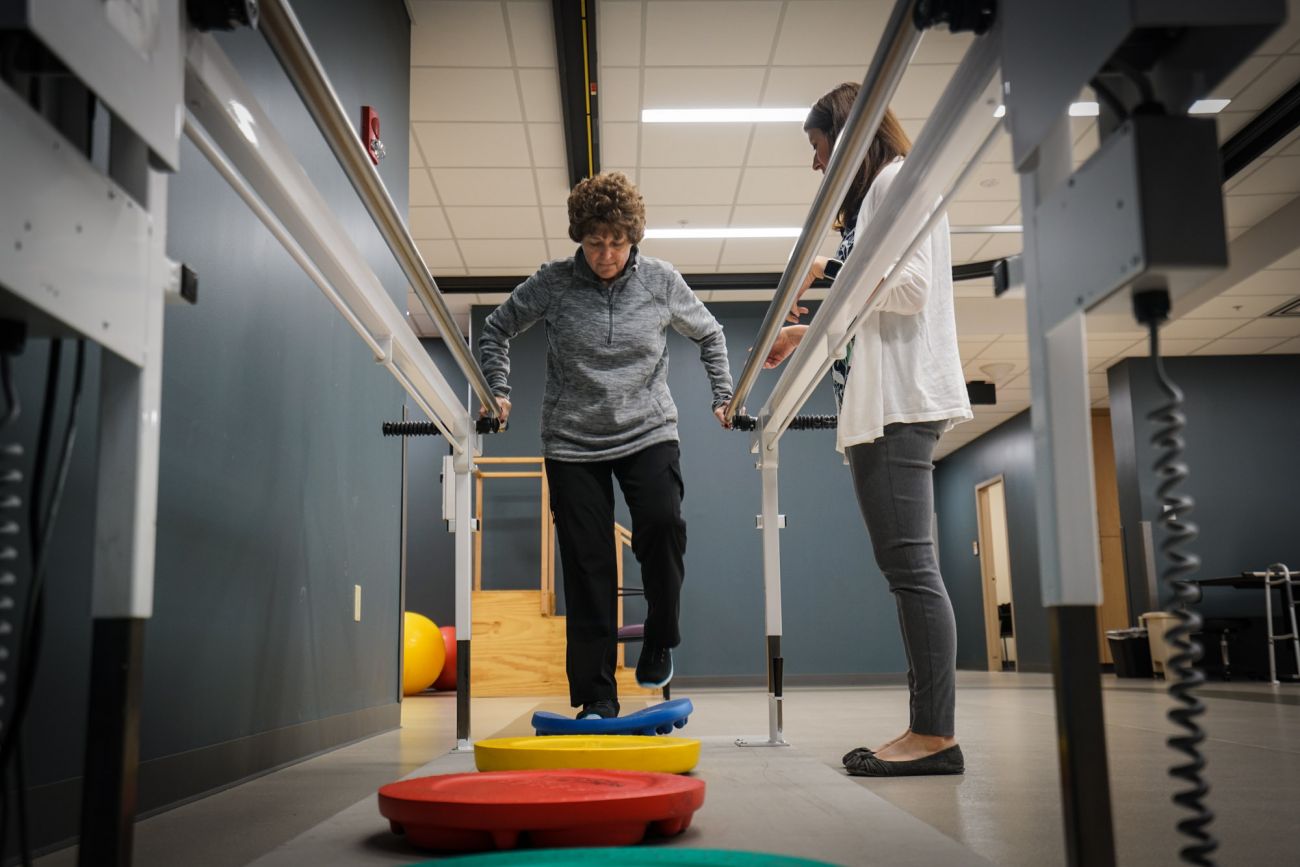"Prehabilitation" Starts Patients on the Road to Recovery
October is National Physical Therapy Month. While physical therapy (PT) is more commonly thought of in relation to athletics or orthopedics, PT plays an essential part in the recovery from cancer treatment. At Roswell Park Comprehensive Cancer Center, physical therapists not only help patients with recovery but also preparation for their treatment with a process called prehabilitation.
“Prehabilitation (prehab), is any type of rehabilitation before a specific event. At Roswell Park, we typically do prehab before surgery or chemotherapy. It’s done to improve outcomes after procedures,” says Roswell Park Physical Therapist Carolyn Miller.
After surgery or intense chemotherapy treatment a patient’s physical strength, mobility and endurance are often reduced. While post-treatment PT will help rehabilitate a patient back to their normal life, prehab hopes to build up a patient’s strength before their procedure. “The better you’re functioning prior to surgery, the better you’ll be doing after surgery,” says Miller.
Prehab is as much about physical training as it is educating patients on what to expect after their treatments. “We lay out the rehab plans before their treatment, so they know what to expect,” says Miller. “It sets expectations so that the patient knows they will be seeing a physical therapist and performing functional mobility soon after their surgery.”
Never miss another Cancer Talk blog!
Sign up to receive our monthly Cancer Talk e-newsletter.
Sign up!A prehabilitation plan is personalized for each patient based on a few different factors. “The type of treatment a patient is preparing for is a big part of it, but a prehab plan is mostly based on the kinds of impairments a patient might have. Maybe they have balance impairments, strength limitations, or they might have gait impairments limiting how far or how well they can walk. We use specialized equipment and techniques so they can still receive the therapy they need despite their impairments,” says Miller.
Perhaps the most important part of establishing a personalized treatment plan is the lifestyle of the patient and the activities they would like to be able to do after recovering from their procedure. “We’ll talk with the patient to find out their specific goals. Maybe it’s wanting to maintain their independence, or it’s returning to work or just able to walk their dog. The therapy we provide is based on their goals and the goal of their physician.”
Physical therapists like Miller often work with the same patients before and after their treatment, which helps her learn a patient’s personality and builds trust. “It is really helpful if a patient sees a therapist beforehand so you can build a relationship. They’re more open to the therapist in the hospital that’s working with them, and they’re more comfortable with you as well. They trust you, and they’re going to listen to what you have to say,” says Miller.
In September, Roswell Park opened up its new Rehabilitation Services Center on the ground floor of the main hospital, which will allow more opportunity for patients to train before their treatments. “We have more space and equipment that we didn’t have in our old location,” says Miller. “We now have more tools for all different levels of prehab, so we’ll be increasing these programs. The goal is to help improve patient outcomes after chemotherapy and surgeries.”


